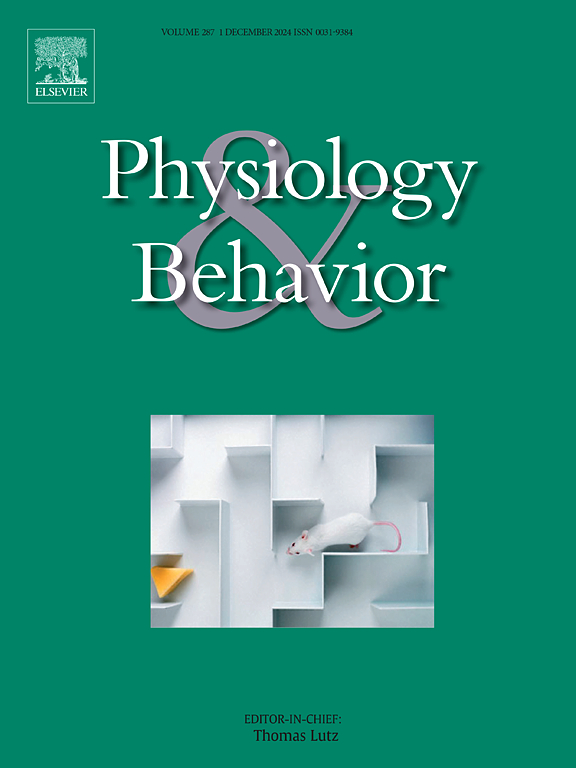Divergent effects of win-paired cues on learning from timeout penalties in female and male rats
IF 2.4
3区 医学
Q2 BEHAVIORAL SCIENCES
引用次数: 0
Abstract
In both males and females, linking rewards with salient audiovisual cues in simulated gambling games increases risky choice in humans and rats. However, the prevalence and severity of gambling problems differs in men and women. In previous work, reinforcement learning (RL) models were applied to data from male rats performing the rat gambling task (rGT) to investigate the computational processes promoting risky choice. In the rGT, the optimal strategy is to favor options paired with smaller per-trial gains but shorter and less frequent time-out penalties. Rewards are either delivered with (cued) or without (uncued) concurrent audiovisual cues. Previous work showed these cues drive risky decision making by causing male rats to under weigh the relative cost of timeout punishments, specifically for one of the highly risky options. Here, we applied the same methodology to a large dataset from female rats performing the cued and uncued rGT to investigate whether the same cognitive mechanism drives risky decision making across sexes. Cues decreased the learning rate from all time-out penalties in female rats, rather than specifically from those paired with a risky option. Although females were less sensitive to the shortest time-outs associated with the one pellet option (P1), this computation failed to promote choice of this comparatively safe option due to the overall lower learning rate from penalties. Differences revealed by computational modeling in the way risky choice develops across sexes may help us understand the divergent trajectory of gambling disorder in men and women.
赢对提示对雌雄大鼠暂停处罚学习的不同影响
在男性和女性中,在模拟赌博游戏中,将奖励与显著的视听线索联系起来会增加人类和老鼠的风险选择。然而,赌博问题的流行程度和严重程度在男性和女性中有所不同。在之前的工作中,我们将强化学习(RL)模型应用于执行大鼠赌博任务(rGT)的雄性大鼠的数据,以研究促进风险选择的计算过程。在rGT中,最优策略是选择每次试验收益较小但暂停惩罚时间较短且次数较少的选项。奖励要么有(线索),要么没有(无线索)同步的视听线索。先前的研究表明,这些线索会导致雄性大鼠低估暂停惩罚的相对成本,尤其是高风险的选择之一,从而驱动风险决策。在这里,我们将相同的方法应用于执行提示和未提示rGT的雌性大鼠的大型数据集,以调查是否相同的认知机制驱动了两性之间的风险决策。提示降低了雌性大鼠的所有暂停惩罚的学习率,而不是与风险选项配对的大鼠的学习率。尽管雌性对与单一颗粒选项(P1)相关的最短暂停时间不太敏感,但由于惩罚的整体学习率较低,这种计算未能促进选择这种相对安全的选项。计算模型揭示了不同性别之间风险选择发展方式的差异,这可能有助于我们理解男性和女性赌博障碍的不同轨迹。
本文章由计算机程序翻译,如有差异,请以英文原文为准。
求助全文
约1分钟内获得全文
求助全文
来源期刊

Physiology & Behavior
医学-行为科学
CiteScore
5.70
自引率
3.40%
发文量
274
审稿时长
47 days
期刊介绍:
Physiology & Behavior is aimed at the causal physiological mechanisms of behavior and its modulation by environmental factors. The journal invites original reports in the broad area of behavioral and cognitive neuroscience, in which at least one variable is physiological and the primary emphasis and theoretical context are behavioral. The range of subjects includes behavioral neuroendocrinology, psychoneuroimmunology, learning and memory, ingestion, social behavior, and studies related to the mechanisms of psychopathology. Contemporary reviews and theoretical articles are welcomed and the Editors invite such proposals from interested authors.
 求助内容:
求助内容: 应助结果提醒方式:
应助结果提醒方式:


